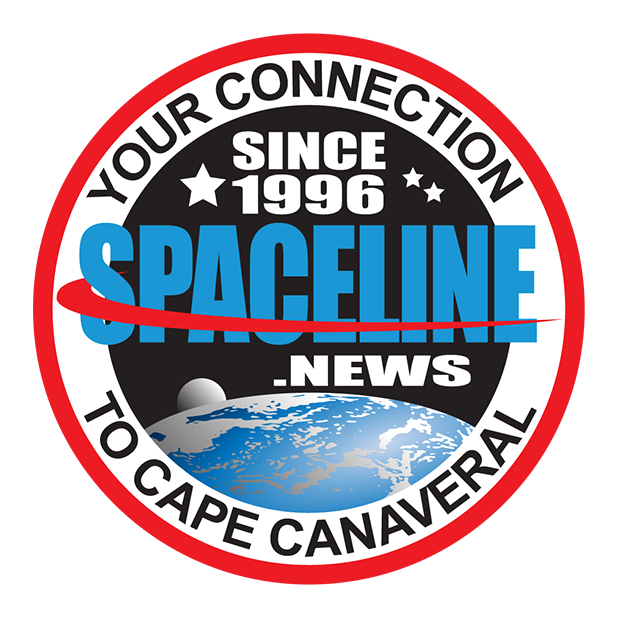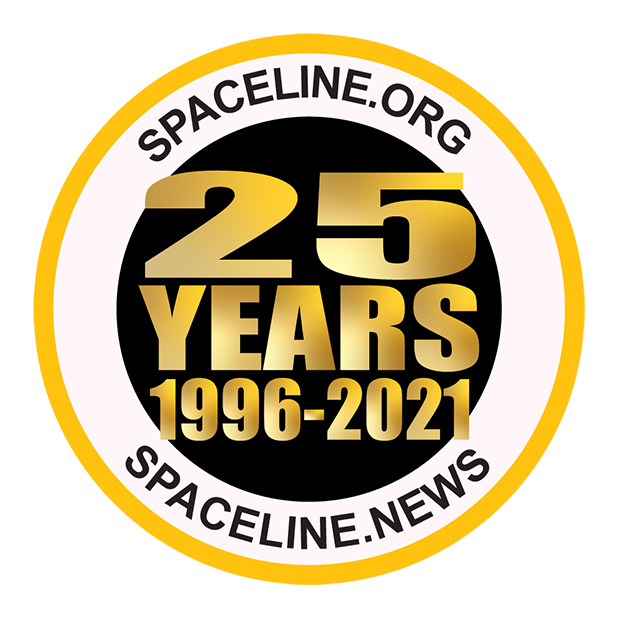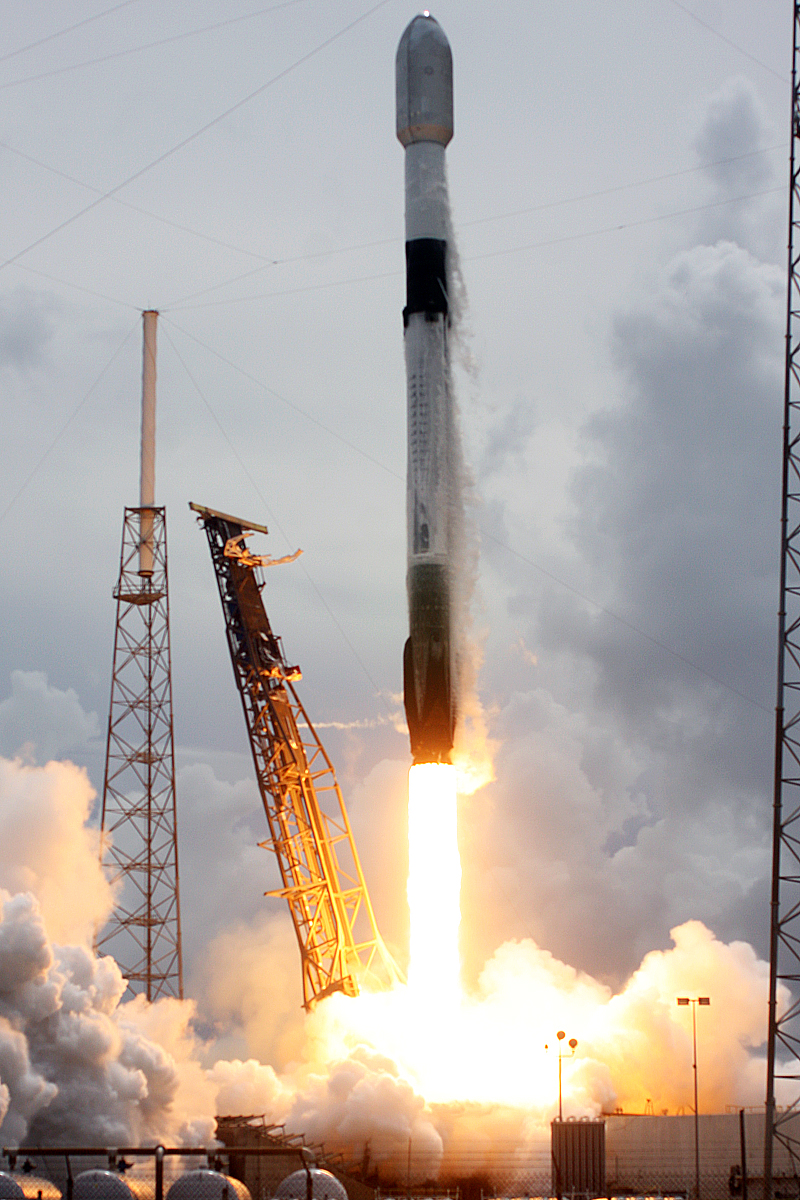
Falcon 9 Transporter-2 Launch, Photo Courtesy Carleton Bailie/Spaceline
Falcon 9 Successfully Launches Transporter-2 Payload
June 30, 2021 | Reported by Cliff Lethbridge
A SpaceX Falcon 9 rocket successfully launched the Transporter-2 payload at 3:31 p.m. EDT today from Launch Pad 40 on Cape Canaveral Space Force Station. Launch was scheduled for yesterday but was postponed when a privately owned helicopter flew into the launch hazard zone in the rocket's flight path. Today's launch was scheduled for 2:56 p.m. EDT but slipped to 3:11 p.m. EDT and ultimately 3:31 p.m. EDT due to clouds and rain in the launch area.
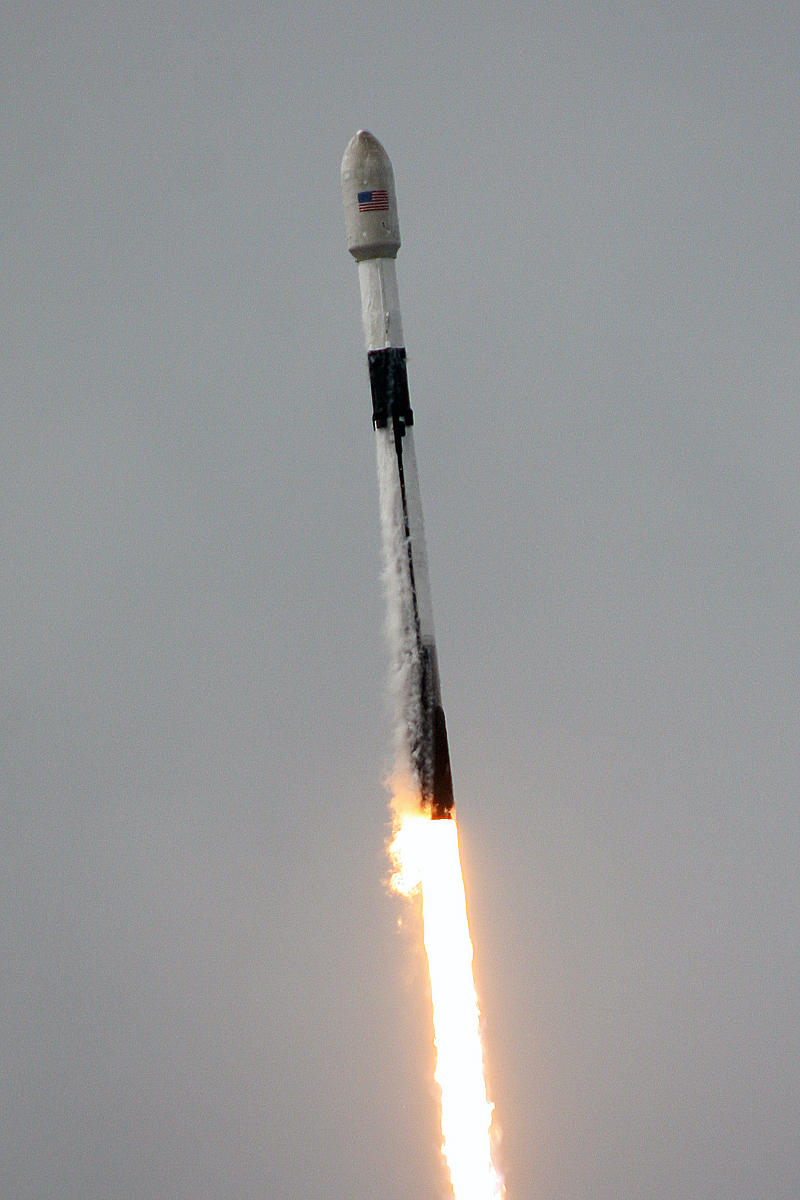
Falcon 9 Transporter-2 In Flight, Photo Courtesy Carleton Bailie/Spaceline
The first stage booster employed today was being flown for the eighth time, having previously supported the GPS III-SV03 mission, the Turksat-5A mission and five Starlink missions. The booster was successfully recovered today with a spectacular landing at Landing Zone 1 on Cape Canaveral Space Force Station. The payload fairing halves employed today were each being flown for the third time, one having previously supported the Transporter-1 mission and one Starlink mission and one having previously supported the SAOCOM-1B mission and one Starlink mission. The payload fairing halves were recovered by ship after parachuting to the Atlantic Ocean.
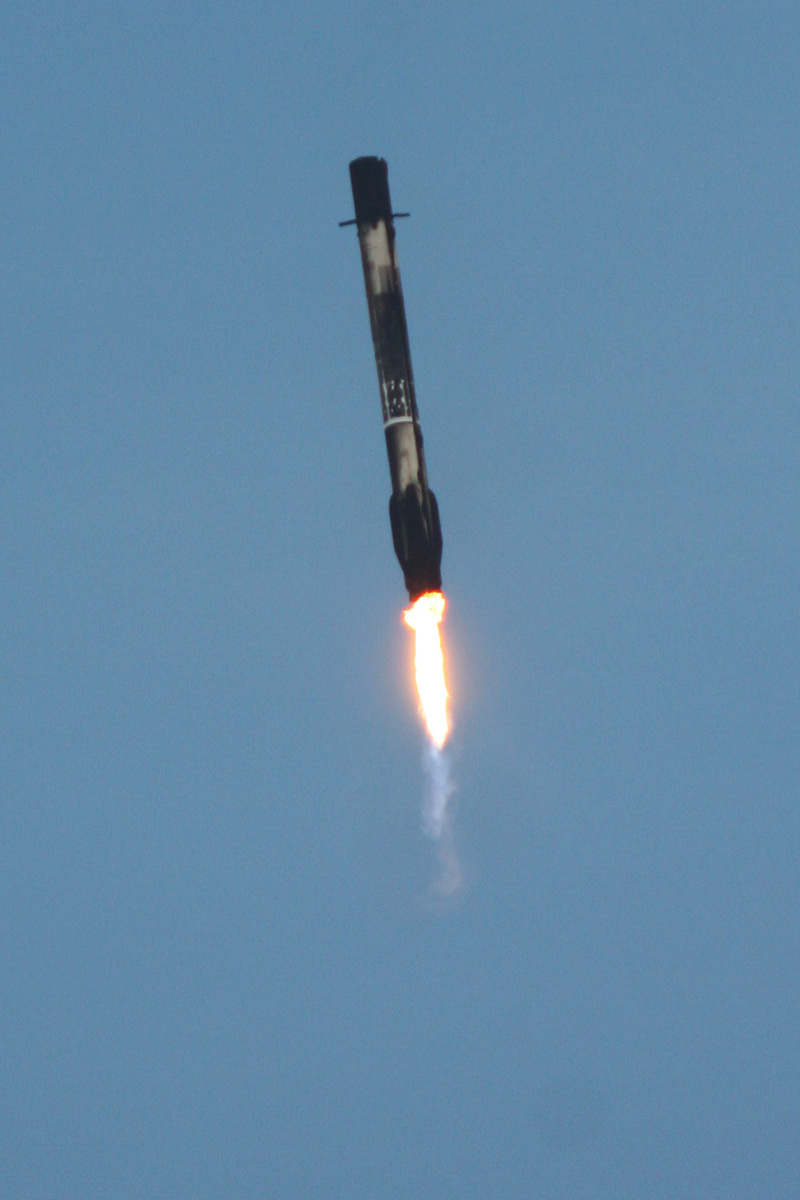
Falcon 9 Booster Approaches Landing, Photo Courtesy Carleton Bailie/Spaceline
The Transporter-2 payload carried 88 small satellites, including 85 cubesats, microsats and orbital transfer vehicles for commercial and government customers and three SpaceX owned and operated Starlink broadband Internet satellites. All of the satellites were deployed in a polar orbit from about 60 minutes to 90 minutes after launch. Transporter-2 is the second dedicated SmallSat Rideshare Program mission. Transporter-1, launched from the Cape on January 24, 2021 carried a record setting 143 satellites. While Transporter-2 carries much fewer satellites, SpaceX says it carries more mass than Transporter-1.
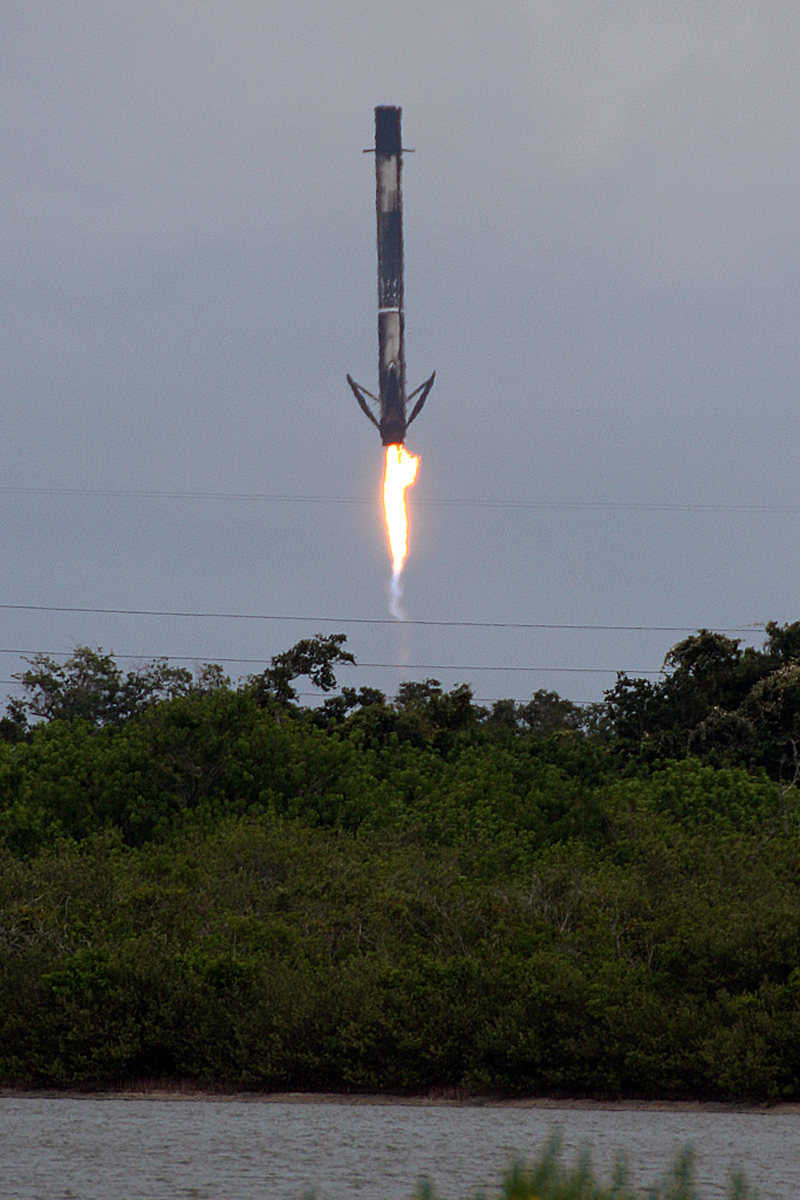
Falcon 9 Booster Approaches Landing, Photo Courtesy Carleton Bailie/Spaceline
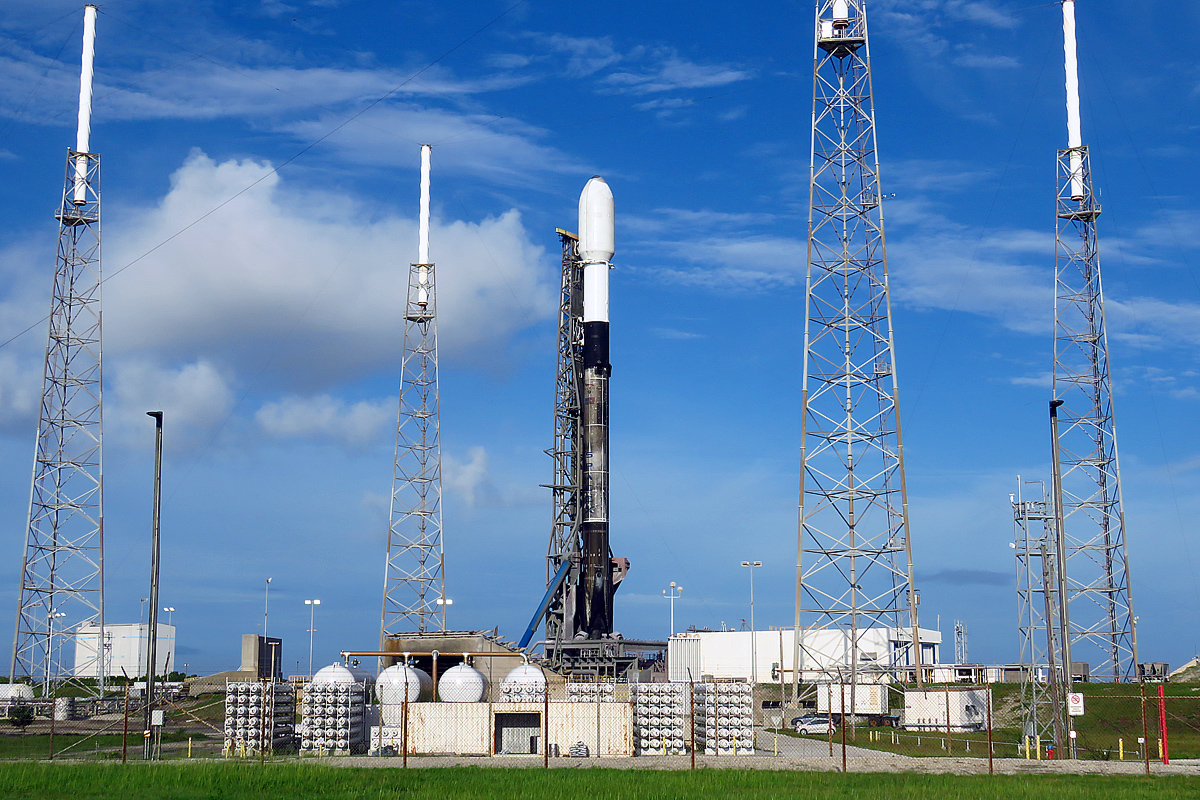
Falcon 9 Transporter-2 On Launch Pad 40, Photo Courtesy Carleton Bailie/Spaceline
Falcon 9 Transporter-2 Launch Scrubbed
June 29, 2021 | Reported by Cliff Lethbridge
Launch of a SpaceX Falcon 9 rocket from Launch Pad 40 on Cape Canaveral Space Force Station scheduled for 2:56 p.m. EDT today has been scrubbed. A hold in the countdown was called at Launch Minus 11 seconds due to a "fouled range" and a scrub was announced seconds later. SpaceX confirmed that an aircraft flying into the restricted airspace in the rocket's flight path caused the scrub. Launch has been rescheduled for tomorrow, June 30, 2021 at 2:56 p.m. EDT. Like today, there is a 58-minute launch window for tomorrow's launch attempt. The rocket is carrying 88 small satellites as part of the Transporter-2 payload.

Falcon 9 Transporter-2 View From Press Site, Photo Courtesy Carleton Bailie/Spaceline
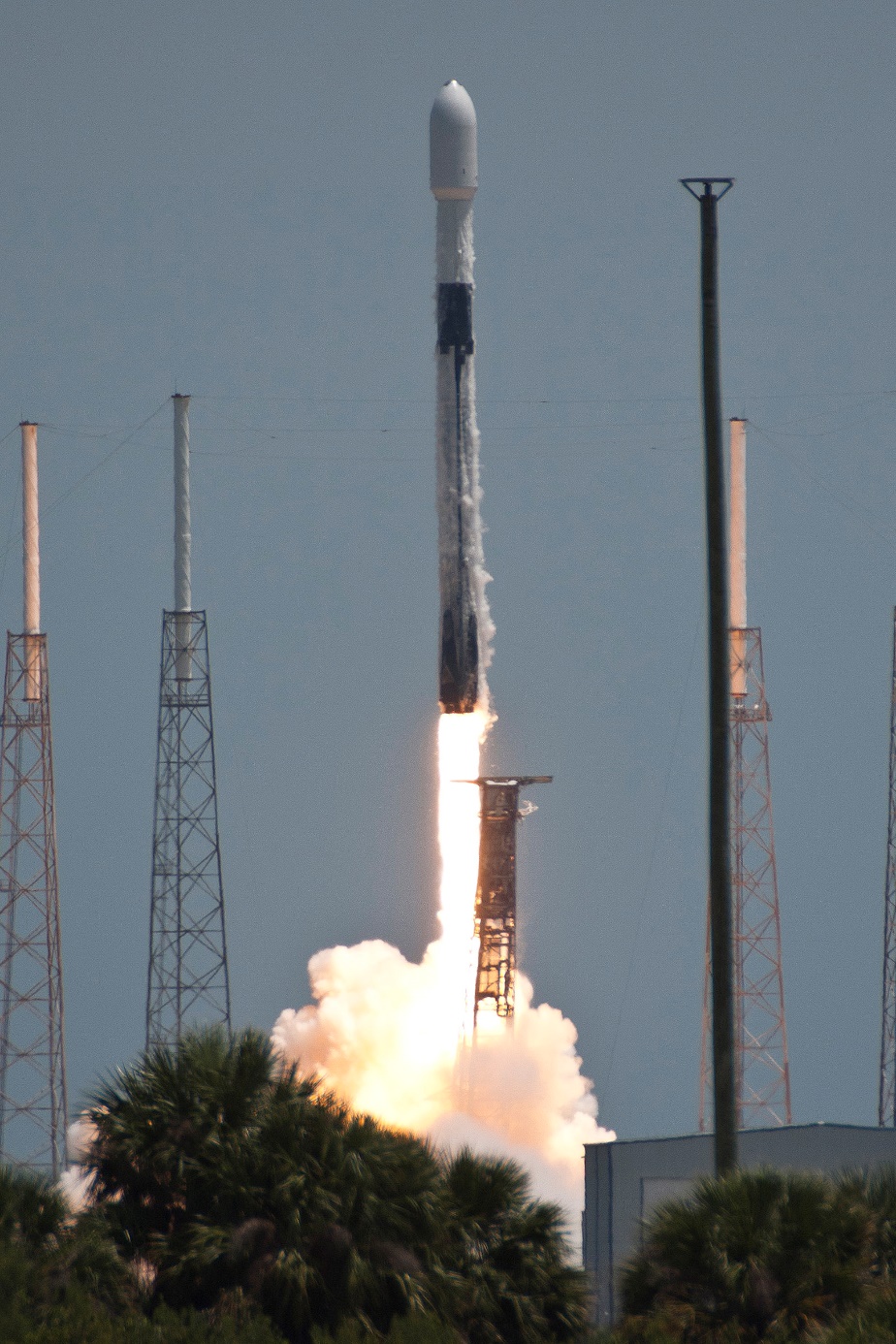
Falcon 9 GPS III-SV05 Launch, Photo Courtesy Carleton Bailie/Spaceline
Falcon 9 Launches GPS III-SV05 Satellite
June 17, 2021 | Reported by Cliff Lethbridge
A SpaceX Falcon 9 rocket successfully launched the GPS III-SV05 satellite at 12:09 p.m. EDT today from Launch Pad 40 on Cape Canaveral Space Force Station. The first stage booster employed today was being flown for the second time, having previously supported the GPS III-SV04 mission and was successfully recovered with a landing on the "Just Read the Instructions" drone ship positioned on the Atlantic Ocean about 400 miles northeast of Cape Canaveral. This marks the first time a Falcon 9 has flown a flight proven first stage booster in support of a national security mission. This will provide significant cost savings per launch in future flights for the Space Force and other government agencies.
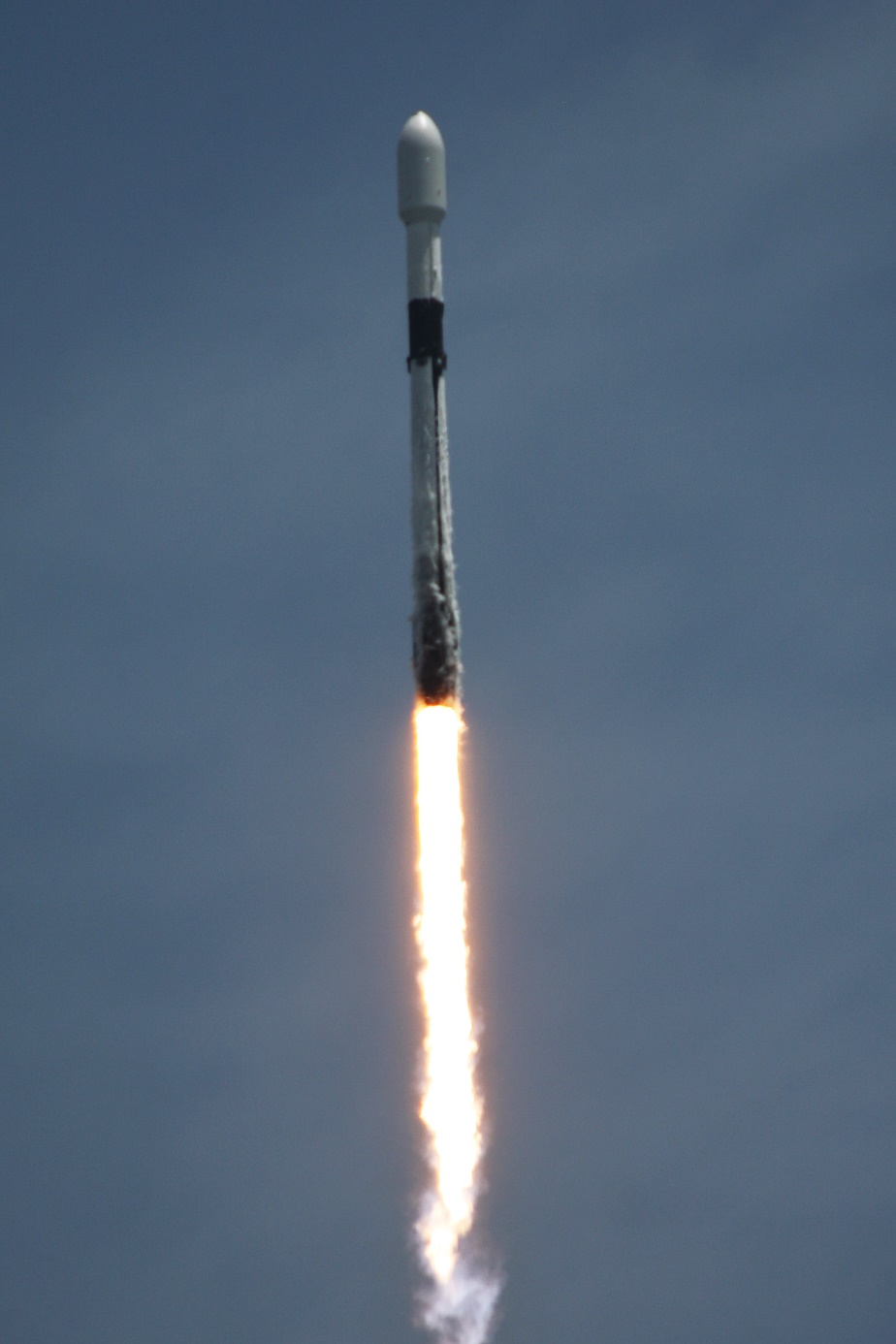
Falcon 9 GPS III-SV05 In Flight, Photo Courtesy Carleton Bailie/Spaceline
The satellite payload was successfully deployed about 90 minutes after launch. GPS III-SV05 (Global Positioning System III-Space Vehicle 05) is the fifth in a planned constellation of ten next generation GPS satellites. The GPS III series of satellites is intended to deliver sustained, reliable GPS capabilities to America's warfighters, U.S. allies and civilian users. GPS provides positioning, navigation and timing service to civilian and military users worldwide, with the goal of fulfilling increasing demands for the GPS system. System improvements introduced with the GPS III series include improved anti-jamming, improved accuracy and improved integrity. The satellites operate on six orbital planes at 55-degrees inclination at an altitude of about 12,000 miles. Design life is 15 years with 12 years mean mission duration. Launch weight of the satellite was about 8,000 pounds. Position accuracy is within 0.63 meters. Prime contractor for GPS III-SV05 is Lockheed Martin.
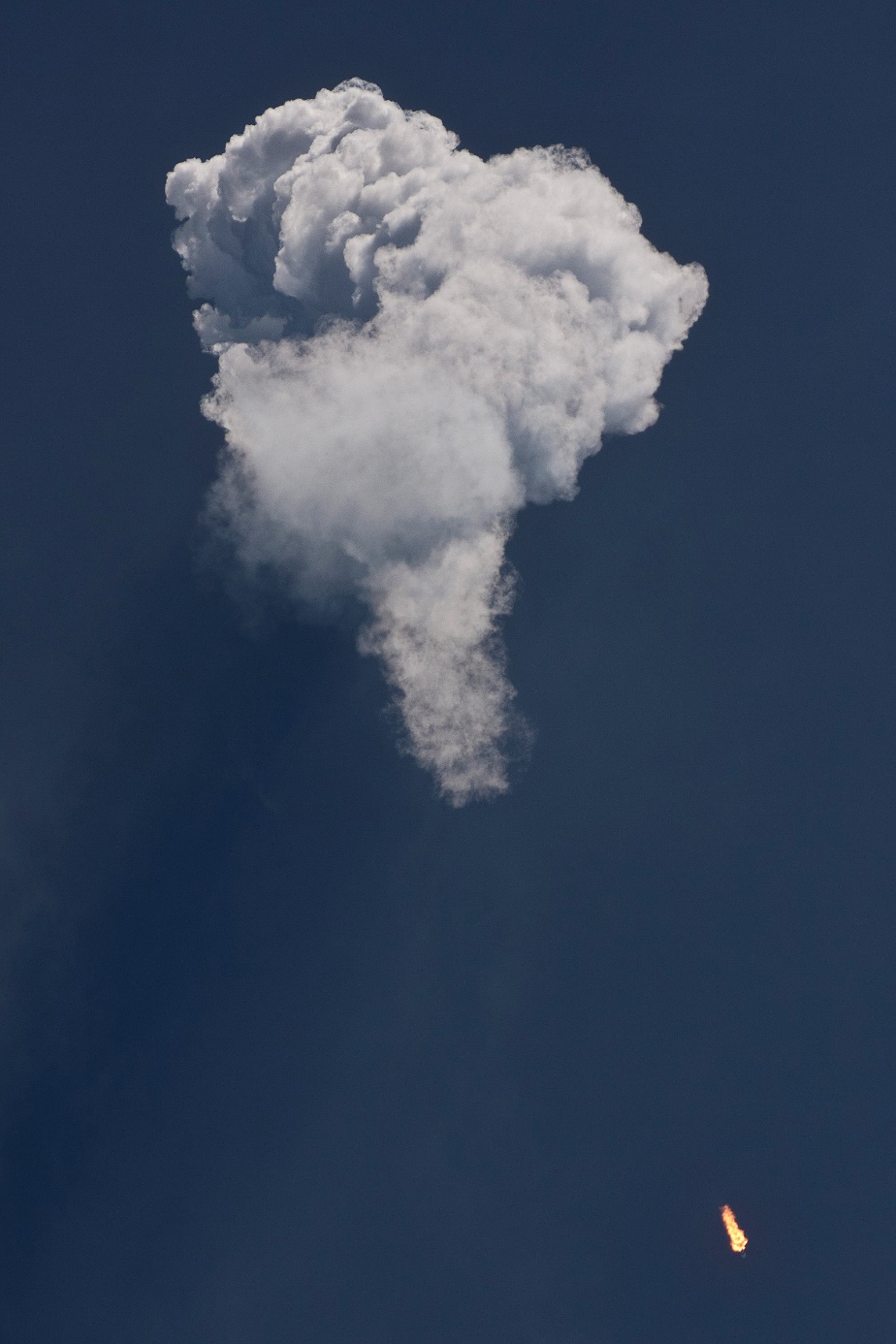
Falcon 9 GPS III-SV05 Downrange, Photo Courtesy Carleton Bailie/Spaceline
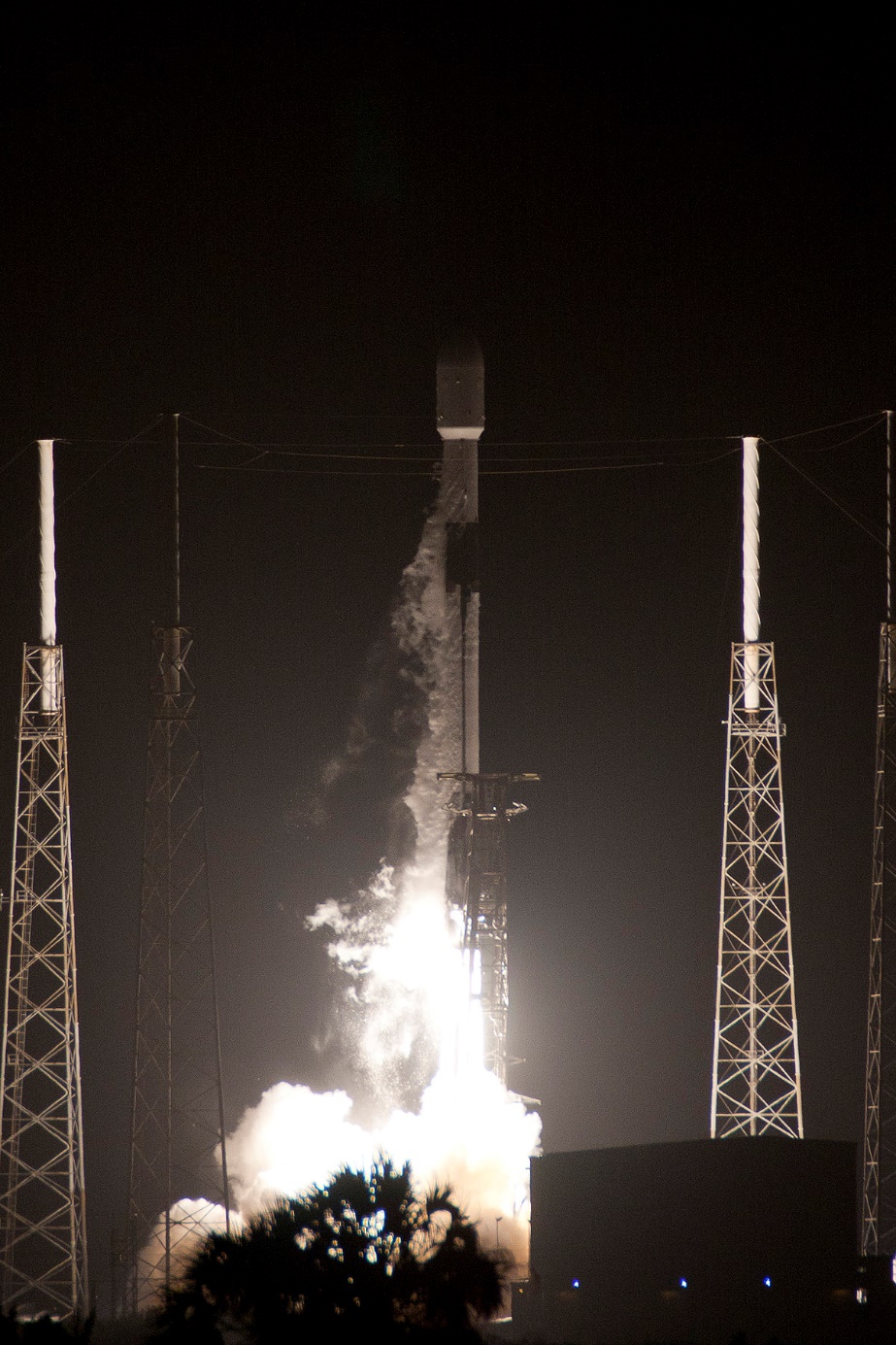
Falcon 9 SXM-8 Launch, Photo Courtesy Carleton Bailie/Spaceline
Falcon 9 Launches SXM-8 Satellite For SiriusXM
June 6, 2021 | Reported by Cliff Lethbridge
A SpaceX Falcon 9 rocket successfully launched the SXM-8 satellite for SiriusXM at 12:26 a.m. EDT today from Launch Pad 40 on Cape Canaveral Space Force Station. The first stage booster employed today was being flown for the third time, having previously supported the manned Crew-1 and Crew-2 missions. The booster was successfully recovered today with a landing on the "Just Read the Instructions" drone ship positioned on the Atlantic Ocean about 200 miles northeast of Cape Canaveral. The SXM-8 satellite, owned and operated by space-based radio provider SiriusXM, was deployed in a geostationary transfer orbit about 32 minutes after launch. Built my Maxar, the 15,000-pound satellite can produce about 8,000 watts of programming and has a design life of 15 years. The company is banking on the success of this satellite, as the SXM-7 satellite, successfully launched aboard a Falcon 9 rocket last December, suffered several malfunctions upon reaching orbit and was declared a total loss.
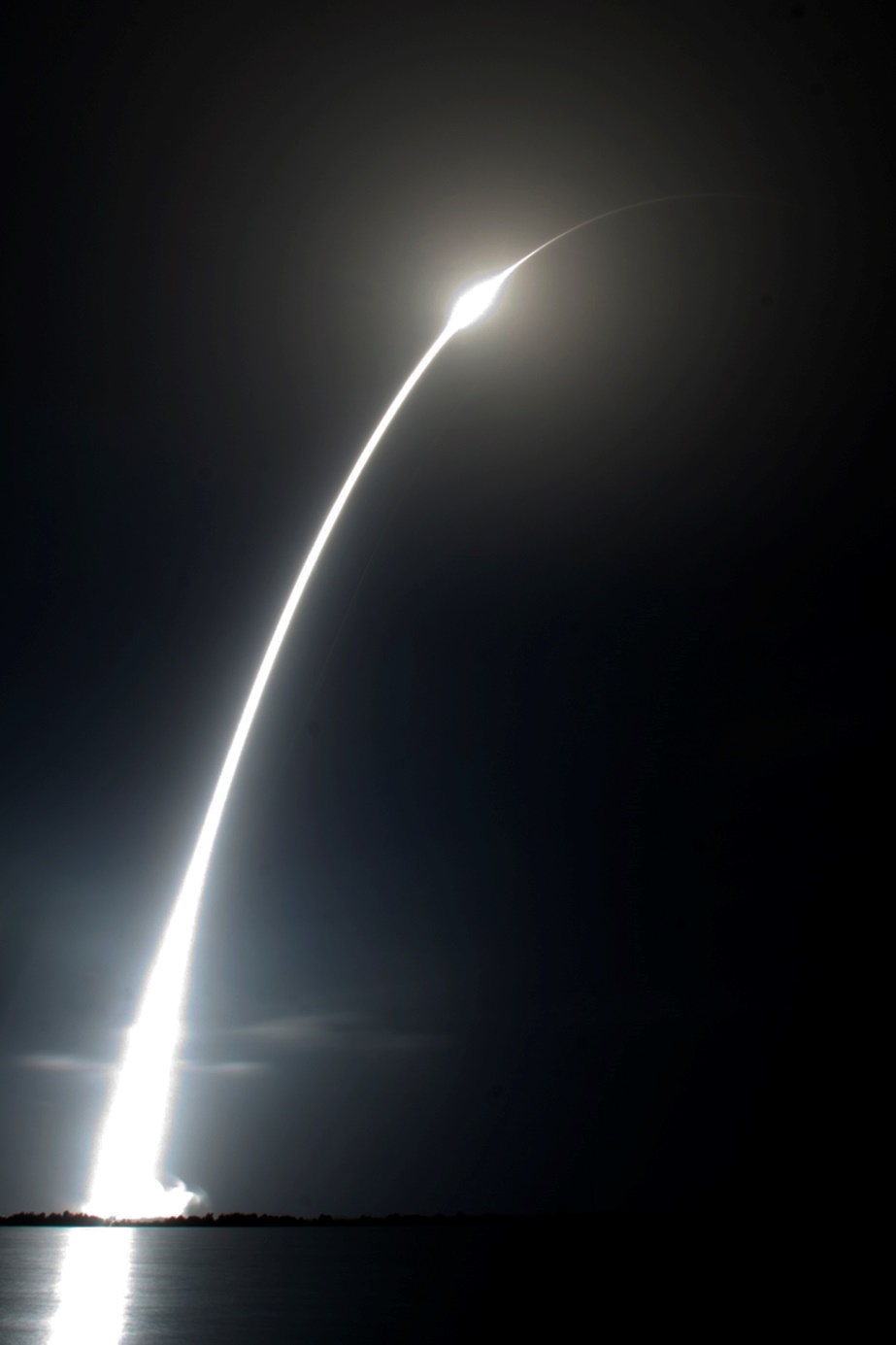
Falcon 9 SXM-8 Streak Shot, Photo Courtesy Carleton Bailie/Spaceline
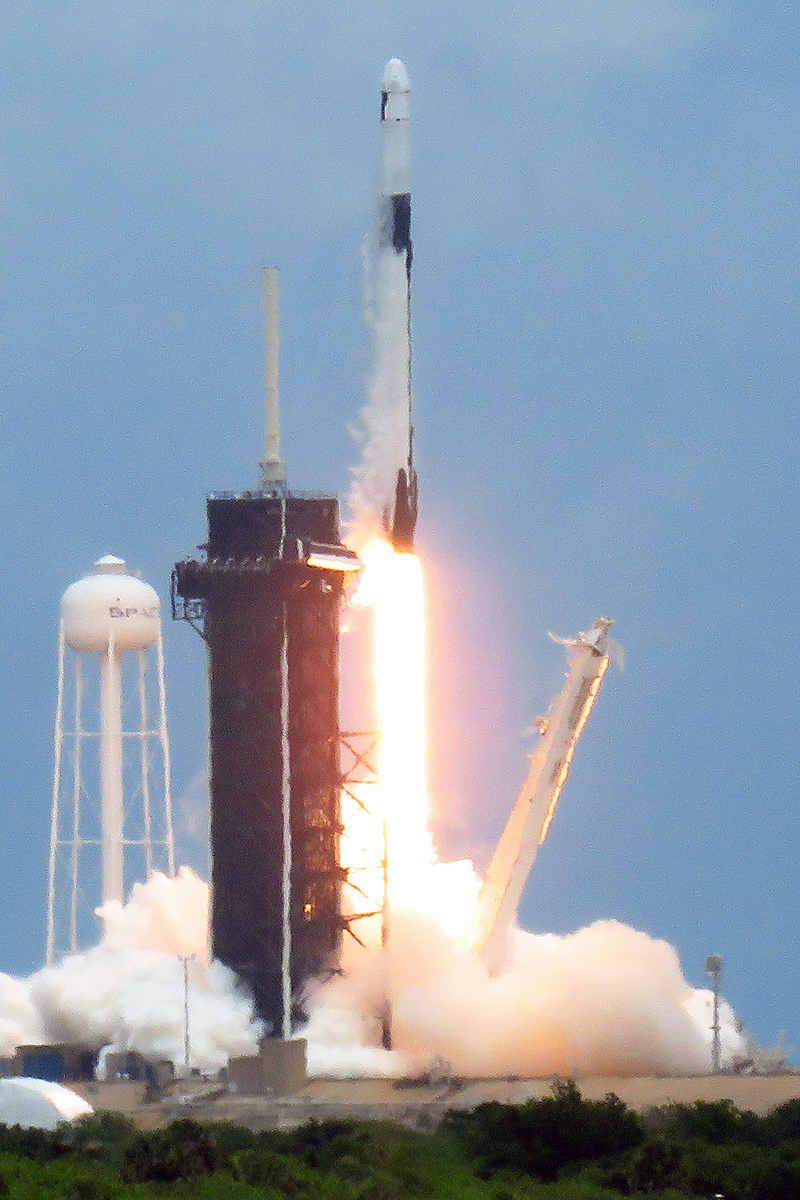
Falcon 9 CRS-22 Launch, Photo Courtesy Carleton Bailie/Spaceline
Falcon 9 Launches CRS-22 Payload For NASA
June 3, 2021 | Reported by Cliff Lethbridge
A SpaceX Falcon 9 rocket successfully launched the CRS-22 payload for NASA at 1:29 p.m. EDT today from Launch Pad 39A at the Kennedy Space Center. The first stage booster employed today was being flown for the first time and was successfully recovered with a landing on the "Of Course I Still Love You" drone ship positioned on the Atlantic Ocean about 200 miles northeast of Cape Canaveral. The CRS-22 payload separated from the Falcon 9 second stage about 12 minutes after launch and is set to dock with the International Space Station (ISS) on Saturday, June 5, 2021 at about 5:00 a.m. EDT. The unmanned spacecraft will remained docked at ISS for about a month prior to returning to Earth with a splashdown on the Atlantic Ocean. CRS-22 (Commercial Resupply Services-22) is comprised of a SpaceX Cargo Dragon spacecraft laden with supplies, equipment and experiments for ISS, including new solar arrays to help power the space station.
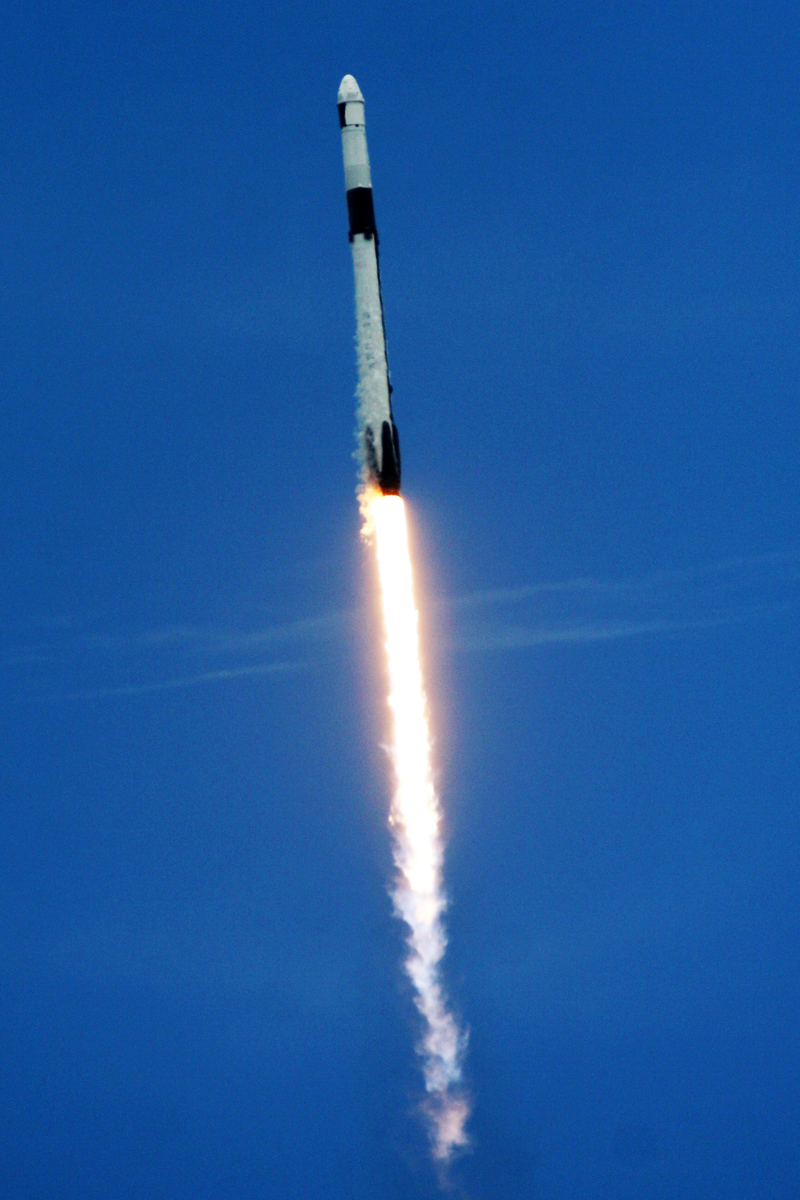
Falcon 9 CRS-22 In Flight, Photo Courtesy Carleton Bailie/Spaceline




